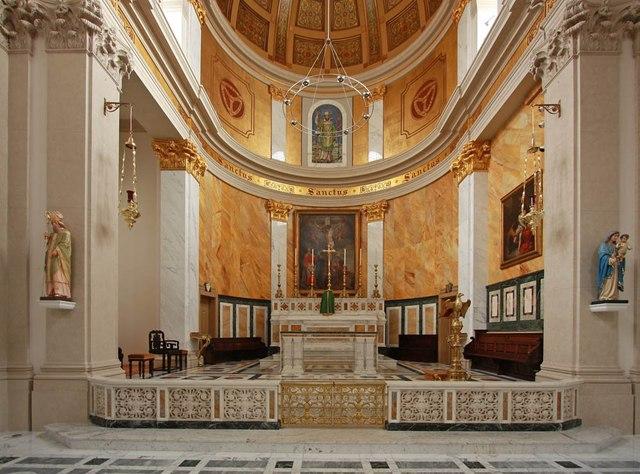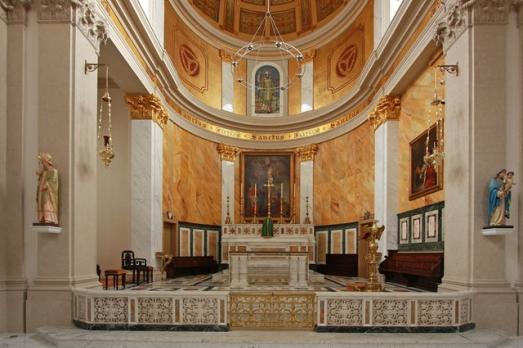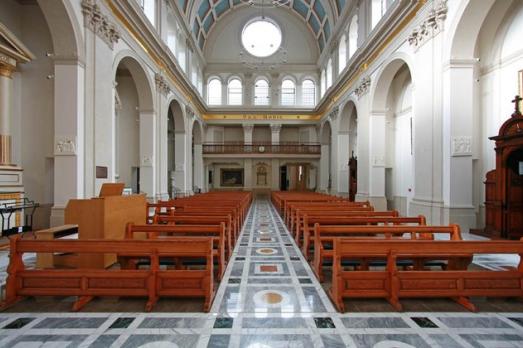In 1690, when only the privileged lived in Soho Square, the Earl of Carlisle established his home here. Around 1760 it was leased by one Mrs Cornelys. An opera singer, serial bankrupt and socialite, she had a child fathered by Cassanova.
Carlisle House became a venue for dazzling soirees, recitals and concerts,. Leading figures including the Prince of Wales gravitated here to satisfy their cultural, musical, and other appetites. However, Mrs Cornelys’ fortunes changed and she was jailed for bankruptcy.
Surrounding Soho Square was the squalid area of ‘The Rookeries’ immortalised so graphically in Hogarth’s picture ‘Gin lane’. This was home to destitute immigrants, many of them Irish. To add to their misery, the anti Catholic laws denied them the comfort of the sacraments and support of a parish priest.
Occasioned by the Relief Act of 1791, an Irish Franciscan Friar, Father Arthur O’Leary, managed to raise funds to lease Carlisle House with the help of a group of prosperous Irish Catholics who were equally moved by the misery of London’s poor Irish. In 1792, on the 29th of September, St Patrick’s was consecrated, and the existing elegant Italianate building we now know was later built on this site.
St Patrick’s is the first church in England, at least since the Reformation, dedicated to St Patrick. It was also one of the first Catholic parish churches established after the passing of the Catholic Relief Acts of 1778 and 1791, which brought freedom of teaching and worship.
Even in its early days, the church was the scene of several major religious events, most notably the official requiem for the repose of the soul of Pope Pius VI. The annual procession honouring the Tyburn Martyrs stops at St Patrick’s as it makes its way from the Tower of London to Tyburn, as a relic of one of them, Saint Oliver Plunkett, is housed in the church. An important visitor to the church was Archbishop Fulton Sheen, the first Catholic television evangelist. A regular preacher between the 1920′s and 60′s, he was not only a man of enormous renown but also of great holiness. His cause for beatification has been opened. He often described himself as the 'unappointed curate of the parish', and stayed in the Parish House on many occasions. His public talks were so well attended that the congregation would often spill out onto the street.
The church’s patron, St Patrick, was first a foremost a missionary. The missionary endeavour has always been at the very heat of the parish’ desire to evangelise, bring the sacraments, and to prepare their flock for their final meeting with God.




